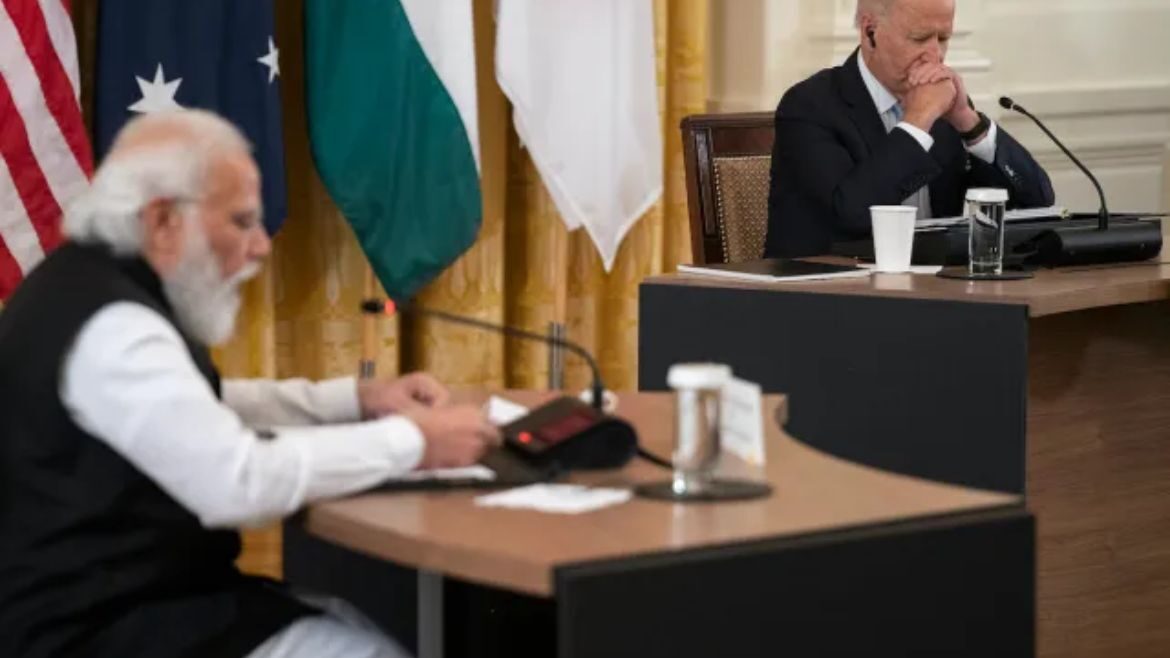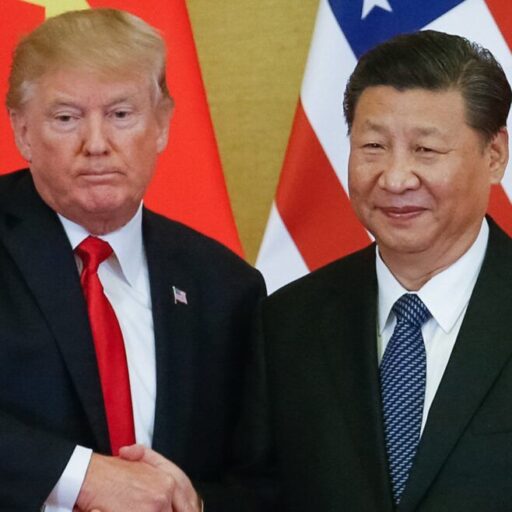The recently concluded Quad leaders’ summit among the US, India, Australia and Japan prioritized several key takeaways. At the same time, it has also led to debates about the exact nature of the partnership.
There has been commentary on whether it is a NATO-like security alliance framework, such as evolved during the Cold War. There have, of course, been arguments against such a characterization of the Quadrilateral Security Dialogue.
From India’s point of view, given that it is currently engaged in a border standoff with China, there is considerable rhetoric in favor of prioritizing the military partnership among Quad countries and possibly developing it into a formal alliance framework. While there could be an argument that India would benefit from such an alliance, New Delhi has already made it clear that it does not view the Quad as a military alliance.
There could be at least four factors to consider.
First, a military alliance implies that an attack on one will be deemed an attack on the other members of the alliance. However, concerns about entrapment and abandonment will always define the response of nation-states in an alliance framework.
The messy withdrawal of the US and its allies from Afghanistan and the recent discussions on whether Washington will deploy boots on the ground if China invades Taiwan suggest that there will always be uncertainty as to whether allies will respond along anticipated lines.
Second, assistance from Quad countries to respond to situations such as China’s aggression along the Line of Actual Control (LAC) might be helpful. However, the prospect of any of the Quad members sending their troops to fight the Chinese People’s Liberation Army on India’s continental landmass is minimal.
Third, with the second-largest army in the world in terms of personnel, India does not require boots on the ground from other countries. Instead, it needs rapid technological upgradation of its defense capabilities. Given Japan’s pacifist inclinations, its military partnership with India would be constrained, while Australia is a recipient of defense technologies rather than a major exporter of them.
Fourth, the Quad countries have varied strengths. Japan has enough capabilities to stand up to Chinese assertions in East Asia, whereas Australia will emerge stronger through the AUKUS (Australia-United States-United Kingdom) security trilateral.
Partnerships already in place
India has continued to demonstrate the ability to stand up to Chinese military aggression and has responded to Beijing’s military buildups across the LAC with equal reinforcements. Last year, 20 Indian soldiers and four Chinese soldiers were killed in Ladakh skirmishes, and a border standoff has ensued since then.
Among the Quad members, only the US has a sufficient arsenal to stand up to China on its own across all theaters of the Indo-Pacific region. Hence it is not surprising that New Delhi has developed a robust security partnership with Washington. India enjoys a unique status as a major defense partner of the US and has license-free access to a wide range of military and dual-use technologies.
Moreover, Washington and Delhi have signed BECA, LEMOA and COMCASA, signaling long-term military cooperation.
India’s defense partnerships with Japan and Australia have also witnessed significant improvements in the recent past. India and Japan have signed the Acquisition and Cross-Servicing Agreements (ACSA), while India and Australia have signed a deal for reciprocal access to military bases for logistics support.
There is further scope and desire for an elevation of defense ties, as New Delhi has institutionalized separate 2+2 annual foreign- and defense-ministerial-level dialogues with Washington, Tokyo and Canberra.
Economic engagement
China has been uneasy over the Quad from the outset and has been vocal against other countries’ joining the framework. For instance, Li Jiming, the Chinese ambassador to Bangladesh, warned that bilateral relations “would be substantially damaged if Dhaka engages with the Quad.” The evolution of the Quad Plus framework with the participation of Vietnam has also created disquiet in Beijing.
In turn, China has been actively building up its own frameworks in the region, such as the China-South Asia Emergency Supplies Reserve and a Poverty Alleviation and Cooperative Development Center. It has also held a joint meeting at the foreign minister level with Pakistan, Afghanistan and Nepal. Further, Beijing has scaled up economic engagement with Iran, Pakistan, Sri Lanka and Bangladesh.
During the Cold War, economic interaction between the two rival blocs was limited, and as a consequence, the economic disruptions for supporting an ally were minimal. But now, there is no iron curtain in the Indo-Pacific region, and there are complex supply chains that foster interdependence.
Frameworks of engagement among like-minded countries like the Quad will have to navigate such complex dynamics involving robust economic interactions with an adversary. Therefore, there is a need for greater reflection on the functioning of military alliances in an era of deep economic interactions.
This is not to say that India is permanently opposed to military alliances. Significant shifts in the Indo-Pacific security environment may prompt India to consider a closer military partnership with the Quad. However, forming a military alliance in the current geopolitical context is one thing, but unplugging from Chinese economic interactions quite another.
The Quad should aim to redefine fundamentally the economic landscape of the Indo-Pacific region. India has taken a clear stance that economic interactions are inextricably linked to peace and tranquillity on the border. Accordingly, New Delhi banned Chinese digital apps and has created new barriers for Chinese investments in India.
The Quad must collectively respond to Chinese economic architectures, including through diversifying supply chains and countering unfair Chinese trade practices. While rapid economic decoupling from China may not be possible, significant reduction in economic vulnerabilities must rank high on the agenda of the Quad countries.
China’s debt-trap diplomacy and economic coercion continue to put smaller economies at its mercy. Bringing in more like-minded countries that share threat perceptions regarding China via a Quad Plus framework may help constrain space for China as well as increase the cost of Beijing’s economic activities in the Indo-Pacific region.
Therefore, apart from security aspects, the joint statement of the leaders’ summit on September 24 focused on Covid-19 vaccine cooperation, regional infrastructure, cyberspace, people-to-people cooperation, and climate change. The Quad statement is a recognition that in the post-Cold War era, containments should be in the economic realm.










